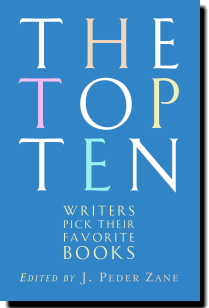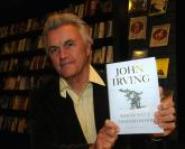Author Photo And Bio
 1. Hamlet by William Shakespeare (1600). The most famous play ever written, Hamlet tells the story of a melancholic prince charged with avenging the murder of his father at the hands of his uncle, who then married his mother and, becoming King of Denmark, robbed Hamlet of the throne. Told the circumstances of this murder and usurpation by his father’s ghost, Hamlet is plunged deep into brilliant and profound reflection on the problems of existence, which meditations delay his revenge at the cost of innocent lives. When he finally acts decisively, Hamlet takes with him every remaining major character in a crescendo of violence unmatched in Shakespearean theater.
1. Hamlet by William Shakespeare (1600). The most famous play ever written, Hamlet tells the story of a melancholic prince charged with avenging the murder of his father at the hands of his uncle, who then married his mother and, becoming King of Denmark, robbed Hamlet of the throne. Told the circumstances of this murder and usurpation by his father’s ghost, Hamlet is plunged deep into brilliant and profound reflection on the problems of existence, which meditations delay his revenge at the cost of innocent lives. When he finally acts decisively, Hamlet takes with him every remaining major character in a crescendo of violence unmatched in Shakespearean theater.
 2. Macbeth by William Shakespeare (1606). The shortest of Shakespeare’s tragedies, Macbeth runs along at breakneck speed, elevating Macbeth from Thane of Glamis to Thane of Cawdor to King of Scotland in two brief acts. It explores the psychology of ambition, abetted by supernatural forces, as Macbeth and his wife — one of the few successful marriages in the Shakespearean canon — engineer the murder of King Duncan and Macbeth’s usurpation of the Scottish throne. The pleasures of kingship are rare and brief, however, as the past comes to haunt the future, in ways obscurely prophesied by three witches, and Macbeth is brought down with a terrible swiftness matched only by the speed of his ascent.
2. Macbeth by William Shakespeare (1606). The shortest of Shakespeare’s tragedies, Macbeth runs along at breakneck speed, elevating Macbeth from Thane of Glamis to Thane of Cawdor to King of Scotland in two brief acts. It explores the psychology of ambition, abetted by supernatural forces, as Macbeth and his wife — one of the few successful marriages in the Shakespearean canon — engineer the murder of King Duncan and Macbeth’s usurpation of the Scottish throne. The pleasures of kingship are rare and brief, however, as the past comes to haunt the future, in ways obscurely prophesied by three witches, and Macbeth is brought down with a terrible swiftness matched only by the speed of his ascent.
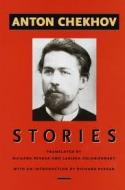 3. Stories of Anton Chekhov (1860–1904). The son of a freed Russian serf, Anton Chekhov became a doctor who, between the patients he often treated without charge, invented the modern short story. The form had been overdecorated with trick endings and swags of atmosphere. Chekhov freed it to reflect the earnest urgencies of ordinary lives in crises through prose that blended a deeply compassionate imagination with precise description. “He remains a great teacher-healer-sage,” Allan Gurganus observed of Chekhov’s stories, which “continue to haunt, inspire, and baffle.”
3. Stories of Anton Chekhov (1860–1904). The son of a freed Russian serf, Anton Chekhov became a doctor who, between the patients he often treated without charge, invented the modern short story. The form had been overdecorated with trick endings and swags of atmosphere. Chekhov freed it to reflect the earnest urgencies of ordinary lives in crises through prose that blended a deeply compassionate imagination with precise description. “He remains a great teacher-healer-sage,” Allan Gurganus observed of Chekhov’s stories, which “continue to haunt, inspire, and baffle.”
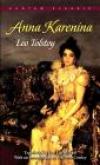 4. Anna Karenina by Leo Tolstoy (1877). Anna’s adulterous love affair with Count Vronsky —which follows an inevitable, devastating road from their dizzyingly erotic first encounter at a ball to Anna’s exile from society and her famous, fearful end —is a masterwork of tragic love. What makes the novel so deeply satisfying, though, is how Tolstoy balances the story of Anna’s passion with a second semiautobiographical story of Levin’s spirituality and domesticity. Levin commits his life to simple human values: his marriage to Kitty, his faith in God, and his farming. Tolstoy enchants us with Anna’s sin, then proceeds to educate us with Levin’s virtue.
4. Anna Karenina by Leo Tolstoy (1877). Anna’s adulterous love affair with Count Vronsky —which follows an inevitable, devastating road from their dizzyingly erotic first encounter at a ball to Anna’s exile from society and her famous, fearful end —is a masterwork of tragic love. What makes the novel so deeply satisfying, though, is how Tolstoy balances the story of Anna’s passion with a second semiautobiographical story of Levin’s spirituality and domesticity. Levin commits his life to simple human values: his marriage to Kitty, his faith in God, and his farming. Tolstoy enchants us with Anna’s sin, then proceeds to educate us with Levin’s virtue.
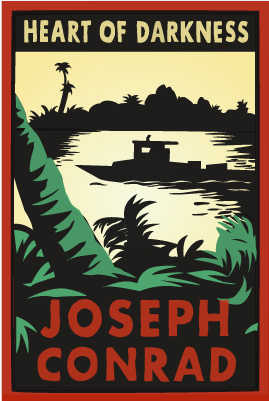 5. Heart of Darkness by Joseph Conrad (1899). In a novella with prose as lush and brooding as its jungle setting, Phillip Marlowe travels to the Belgian Congo to pilot a trading company’s steamship. There he witnesses the brutality of colonial exploitation, epitomized by Kurtz, an enigmatic white ivory trader. To understand evil, Marlowe seeks out Kurtz, whom he finds amongst the natives, dying. After Kurtz laments his own depravity through his final, anguished words—“The horror! The horror!”—Marlowe must decide what to tell his widow back home.
5. Heart of Darkness by Joseph Conrad (1899). In a novella with prose as lush and brooding as its jungle setting, Phillip Marlowe travels to the Belgian Congo to pilot a trading company’s steamship. There he witnesses the brutality of colonial exploitation, epitomized by Kurtz, an enigmatic white ivory trader. To understand evil, Marlowe seeks out Kurtz, whom he finds amongst the natives, dying. After Kurtz laments his own depravity through his final, anguished words—“The horror! The horror!”—Marlowe must decide what to tell his widow back home.
 6. The Tempest by William Shakespeare (1610). The happy peace that Prospero, a powerful magician and former Duke of Milan, and his daughter Miranda share on an enchanted island is broken when a group of Prospero’s former enemies and friends is shipwrecked there. Through the services of his two servants, the base Caliban, to whom the island had originally belonged, and the sprite Ariel, Prospero exacts revenge upon his stranded enemies while engineering the marriage of his daughter to a young nobleman. Anticipating themes that would inform colonial and postcolonial literature — usurpation, bondage, rebellion — this was Shakespeare’s last play without a collaborator.
6. The Tempest by William Shakespeare (1610). The happy peace that Prospero, a powerful magician and former Duke of Milan, and his daughter Miranda share on an enchanted island is broken when a group of Prospero’s former enemies and friends is shipwrecked there. Through the services of his two servants, the base Caliban, to whom the island had originally belonged, and the sprite Ariel, Prospero exacts revenge upon his stranded enemies while engineering the marriage of his daughter to a young nobleman. Anticipating themes that would inform colonial and postcolonial literature — usurpation, bondage, rebellion — this was Shakespeare’s last play without a collaborator.
 7. To the Lighthouse by Virginia Woolf (1927). The Ramsays and their eight children vacation with an assortment of scholarly and artistic houseguests by the Scottish seaside. Mainly set on two days ten years apart, the novel describes the loss, love, and disagreements of family life while reaching toward the bigger question—“What is the meaning of life?”—that Woolf addresses in meticulously crafted, modernist prose that is impressionistic without being vague or sterile.
7. To the Lighthouse by Virginia Woolf (1927). The Ramsays and their eight children vacation with an assortment of scholarly and artistic houseguests by the Scottish seaside. Mainly set on two days ten years apart, the novel describes the loss, love, and disagreements of family life while reaching toward the bigger question—“What is the meaning of life?”—that Woolf addresses in meticulously crafted, modernist prose that is impressionistic without being vague or sterile.
 8. Winesburg, Ohio by Sherwood Anderson (1919). A collection of short stories about the inhabitants of a town whose physical isolation mirrors their psychological distance. With compassion and sadness, Anderson evokes small-town life and thought through a wide range of characters who are not visited by any tragedies save their own inability to forge a bit of happiness in their lives of quiet desperation.
8. Winesburg, Ohio by Sherwood Anderson (1919). A collection of short stories about the inhabitants of a town whose physical isolation mirrors their psychological distance. With compassion and sadness, Anderson evokes small-town life and thought through a wide range of characters who are not visited by any tragedies save their own inability to forge a bit of happiness in their lives of quiet desperation.
 9. Alice’s Adventures in Wonderland by Lewis Carroll (1865). Young Alice follows a worried, hurrying White Rabbit into a topsy-turvy world, where comestibles make you grow and shrink, and flamingoes are used as croquet mallets. There she meets many now-beloved characters, such as the Mad Hatter, the Cheshire Cat, and the Queen of Hearts, in this linguistically playful tale that takes a child’s-eye view of the absurdities of adult manners.
9. Alice’s Adventures in Wonderland by Lewis Carroll (1865). Young Alice follows a worried, hurrying White Rabbit into a topsy-turvy world, where comestibles make you grow and shrink, and flamingoes are used as croquet mallets. There she meets many now-beloved characters, such as the Mad Hatter, the Cheshire Cat, and the Queen of Hearts, in this linguistically playful tale that takes a child’s-eye view of the absurdities of adult manners.
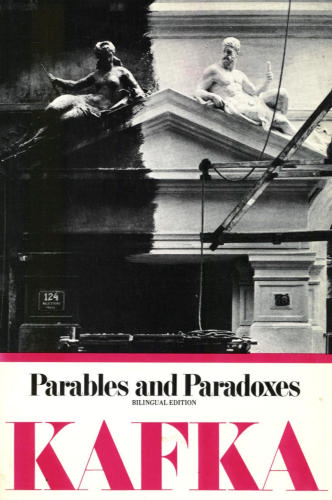 10. Parables and Paradoxes by Franz Kafka (1935). Composed after the author’s death of snippets from his novels, stories, notebooks, and letters, this collection ranges widely —from short pieces on Sancho Panza and Robinson Crusoe to Poseidon and Abraham. As he retells, often with dark humor, some of the West’s central myths, Kafka entertains as he reminds us that every story suggests another story.
10. Parables and Paradoxes by Franz Kafka (1935). Composed after the author’s death of snippets from his novels, stories, notebooks, and letters, this collection ranges widely —from short pieces on Sancho Panza and Robinson Crusoe to Poseidon and Abraham. As he retells, often with dark humor, some of the West’s central myths, Kafka entertains as he reminds us that every story suggests another story.


